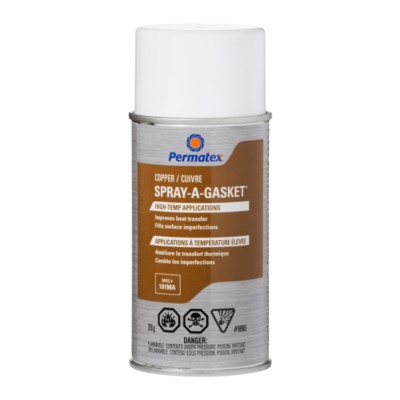I'm building a turbo Honda d16 for the challenge. During the 2019 season we rebuilt and surfaced the head, but were still dealing with overheating after we added the turbo and turned up the boost. Upgraded Headgasket to MLS and added ARP studs made the overheat better, but it was still there. Our best guess is that either the head was warped previously or we damaged it when we were trying to remove the OE gasket.
Last month I bit the bullet and pulled the engine to have the block and the head both surfaced. I just picked them both from the machine shop and saw this on the block. There are similar marks in the same area on 3 of the 4 cylinders. Should I be worried, or is this normal?

Enhance!

Discoloured aluminum. I wouldn't worry about it- The head gasket seals to the steel sleeve.

NOHOME
MegaDork
1/4/21 4:54 p.m.
Did they tell you how much had to be cut off the deck and head?
Any memory of what that circled area looked like before the work?

84FSP
UltraDork
1/4/21 4:56 p.m.
What did the head gasket look like? Leaks are usually visually evident on the gasket or surface before cleaning.
Are you sure that's not just dirt? That's what the lower picture looks like. I'd hit it with a rag and some serious solvent just to make sure.

Nothing to be concerned about..
What you're seeing is the transition of the cutting tooth from air to material. When it's cutting, it's loaded so it's pushing the decking tool up a couple of tenths or so (.0002ish if it's a good, rigid tool, up to .0005" for a normal one, and up to .001" for an older machine that's still putting out fine work), when it transitions into the air gap, it drop down, then it rides back up on the edge and bounces a bit as it stabilizes. What you're seeing is a bit of dirt being dragged onto the deck from the edge as it rolls up a touch and "hammered" into the surface. You won't be able to detect it with your fingernail or anything, and solvent may clean it up if it didn't polymerize (if it was oil-based dirt that got shocked with high heat at the flute).
Either way, the cut itself will be flat in that area well within whatever the RA (Roughness Average) of the rest of the head, and the gasket will take care of it.
Not so fun fact: When we were developing the decking tool for our CNC equipment, we ran into the problem that it was too rigid and it was too easy to get a really-bloody-smooth RA, like 6 or 7 on an aluminum block (normal in the industry at the time was around 45). Our customers ended up taking our recommended feedrate and quadrupling it (effectively increasing the step-over by 4x, or taking 1/4th of the time to pass over the block) because the gasket manufacturer recommended a rougher finish after they had trouble sealing. It was a bit too smooth :) They recommended somewhere between 18-35.
In reply to WonkoTheSane (FS) :
Thanks! That's exactly the sort of expertise I needed.
In reply to 84FSP :
It was a MLS gasket with copper spray-I looked briefly but didn't see any leaks. One piston was much cleaner than the others.
In reply to jwagner (Forum Supporter) :
I'll try the solvent, but if it's dirt it's in there pretty good (see Wonko's response).
In reply to Streetwiseguy :
Thanks! That's valuable information that I didn't know.
In reply to NOHOME :
No, they didn't mention how much was removed. I told them to surface it and explained what I was trying to do.





















